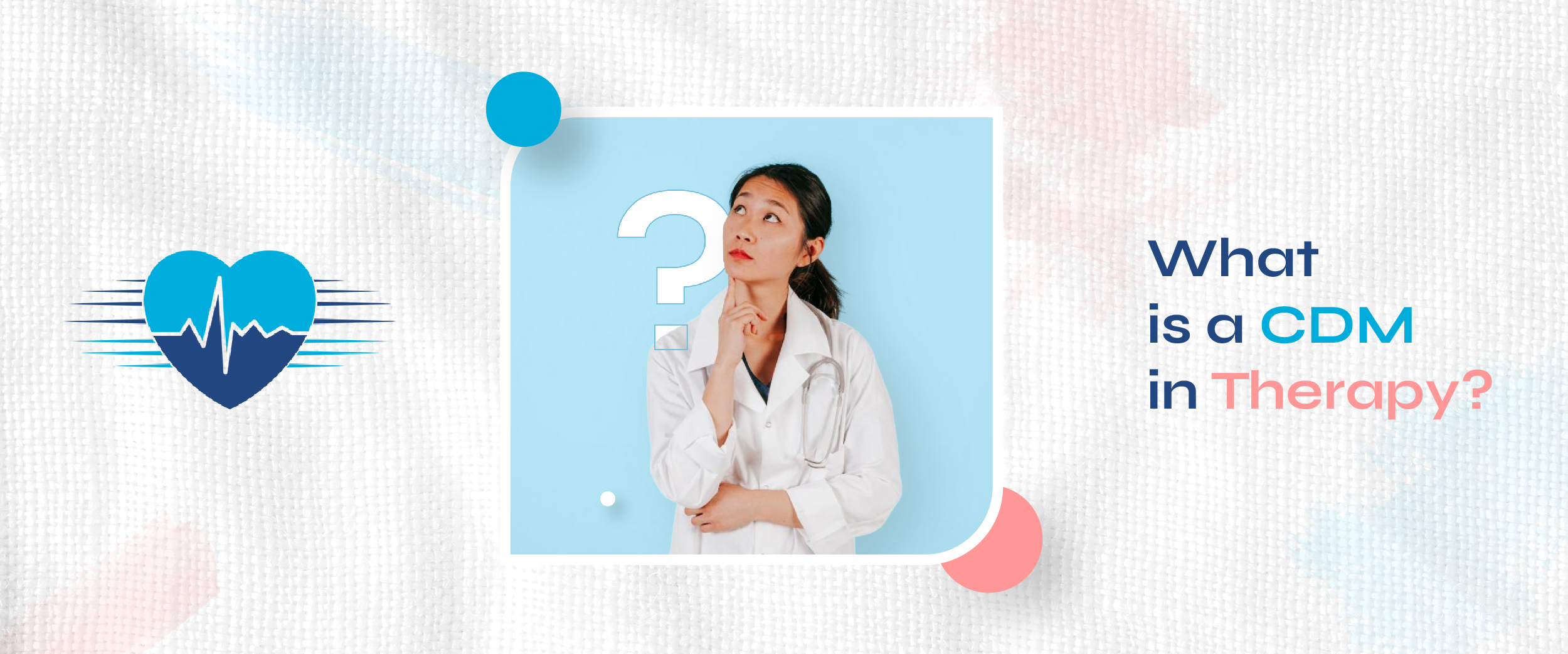In the realm of therapy and mental health treatment, the term CDM often comes up, but what is a CDM in therapy?
In therapy, CDM stands for Clinical Decision Making. It is a critical process. Therapists use it to check and decide on treatments for their clients.
Below, we will explore the details of CDM and discuss its importance in therapy and its effect on the therapeutic process.
Today Telemedicine Offers therapy to people with diverse backgrounds and needs. We connect patients with skilled medical experts using advanced telemedicine technology. Contact us for more information.
Understanding CDM
Clinical Decision Making (CDM) is a method, therapist use to assess, diagnose, and plan treatment for their clients. It involves:
- Gathering and analyzing data
- Making informed decisions about the best course of action for therapy
In simpler terms, what is CDM in therapy? It’s the roadmap that guides therapists in helping clients with their mental health.
The Role of CDM in Therapy
CDM is essential in therapy. It helps therapists choose the right interventions, goals, and plans for each client. Here’s how CDM plays a crucial role in treatment:
-
Assessment and Diagnosis
First, CDM examines the client’s situation. This process involves talks, surveys, and, at times, neurological or psychological tests. Next, the therapist identifies the issue. This step plays a crucial role in choosing the appropriate solution.
-
Treatment Planning
After diagnosis, the therapist uses CDM to craft a treatment plan. This plan includes goals, methods, and a timeline. It is flexible and can change as therapy advances.
-
Ongoing Evaluation
CDM is a continuous process. Therapists assess and modify treatment plans regularly, guaranteeing optimal care for clients.
-
Client Collaboration
CDM involves teamwork. Therapists and clients work together to match the treatment plan with the client’s goals and preferences. This collaboration is crucial for successful therapy.
The Importance of CDM in Therapy
Thinking about what CDM is in therapy helps us see its importance. CDM is vital for tailored, effective treatment. Here are reasons why CDM is crucial:
- CDM allows therapists to develop treatment strategies that cater to each client’s unique needs. This customized method improves the chances of positive results.
- With CDM, therapists can make educated choices swiftly, ensuring clients receive prompt, effective treatment. This speed matters, especially in situations requiring immediate action.
- CDM involves clients in the decision making, giving them a sense of ownership in their therapy. This joint effort often elevates a client’s participation and results.
- From an ethical perspective, CDM is also critical. It guarantees that therapists make choices based on the best evidence available and the client’s specific situation. It avoids the pitfalls linked with a “fits all” therapy style.
How Does CDM Work in Practice?
Now that we’ve explored CDM in therapy and its importance, let’s see how CDM works. It has key steps crucial for therapy success.
-
Initial Assessment
The journey in CDM starts with an initial assessment. Here, the therapist collects information about the client’s:
- Background
- Current symptoms
- Important medical or psychological history
This data helps form a primary diagnosis.
-
Coming Up with a Theory
After the initial assessment, the therapist forms an idea about the patient’s situation. This idea directs the therapy approach and pinpoints possible challenges that could arise during treatment.
-
Develop & Implement the Treatment Plan
The therapist designs a treatment plan based on the theory. This plan includes specific therapeutic methods, such as:
- Cognitive Behavioral Therapy (CBT)
- Dialectical Behavior Therapy (DBT)
- Other Evidence Based Methods
The plan clearly states therapy goals and outlines the projected timeline to achieve these goals.
-
Continuous Monitoring and Changes
CDM is a continuous process. The therapist regularly checks the treatment plan’s success. If the client isn’t improving, the therapist may:
- Adjust the method
- Set new goals
- Explore other options
-
Final Review and Conclusion
The therapist reviews at the end of therapy to see if the client has achieved their therapy targets. If the goals have been reached, therapy may wrap up. If not, the therapist and client might continue therapy or explore other treatment solutions.
The Benefits of CDM in Therapy
Clinical Decision Making (CDM) brings many advantages to therapy. Here are some of the key benefits:
Improved Outcomes
CDM works to create treatments specific to each client’s unique requirements. It typically results in better results. When treatment is customized and founded on factual data, it helps clients achieve their therapeutic ends more effectively.
Increased Client Satisfaction
Clients involved in the CDM process are more satisfied with their therapy experience. This satisfaction can lead to:
- Better engagement
- A greater sense of empowerment
Ethical and Professional Practice
CDM helps therapists maintain ethical and professional standards. It guarantees that choices are founded on firm clinical insight and facts, which is especially important in tricky cases with numerous therapy choices.
Flexibility and Adaptability
One of the critical advantages of CDM is its flexibility. The process is ongoing, allowing therapists to:
- Adapt the treatment plan as needed
- Respond to changes in the client’s condition or circumstances
This adaptability is crucial for providing adequate care.
Challenges in CDM
CDM has benefits but also challenges. It’s crucial to know these and find solutions.
- Complex Cases: Some cases are difficult to diagnose, making treatment planning difficult. Therapists might need to consult others or order more tests.
- Client Resistance: Some clients may resist assessments or plans. Building trust and encouraging cooperation is vital.
- Resource Limitations: Therapists might lack access to certain tests or treatments, making implementing CDM challenging. Creative solutions are necessary.
- Time Constraints: CDM can take much time, especially in complex cases. Therapists must balance thoroughness with timely care, and time management is essential.
Wrap It Up, What is a CDM in Therapy?
So, what is CDM in therapy? It’s an essential tool therapist use to choose what’s best for their clients. CDM’s importance and functionality help clients and therapists achieve shared success.
CDM isn’t just decision making, it’s about making the best choice for each client. It assures therapy is tailored, works, and is moral.
By improving their CDM skills, therapists can give even better care to those who need it, guiding clients through their mental health issues with assurance and backup.
FAQs
What are the main components of CDM?
The main parts are checking, setting goals, planning actions, and checking results.
Can we use CDM for different kinds of treatment?
Yes, CDM is not rigid. It adjusts to different ways of therapy to fit every client.
Can using CDM be challenging at times?
Yes, it can be. Using CDM can be tricky because you must be flexible enough to match the model with each client’s unique needs. It’s more complicated to put to use.





